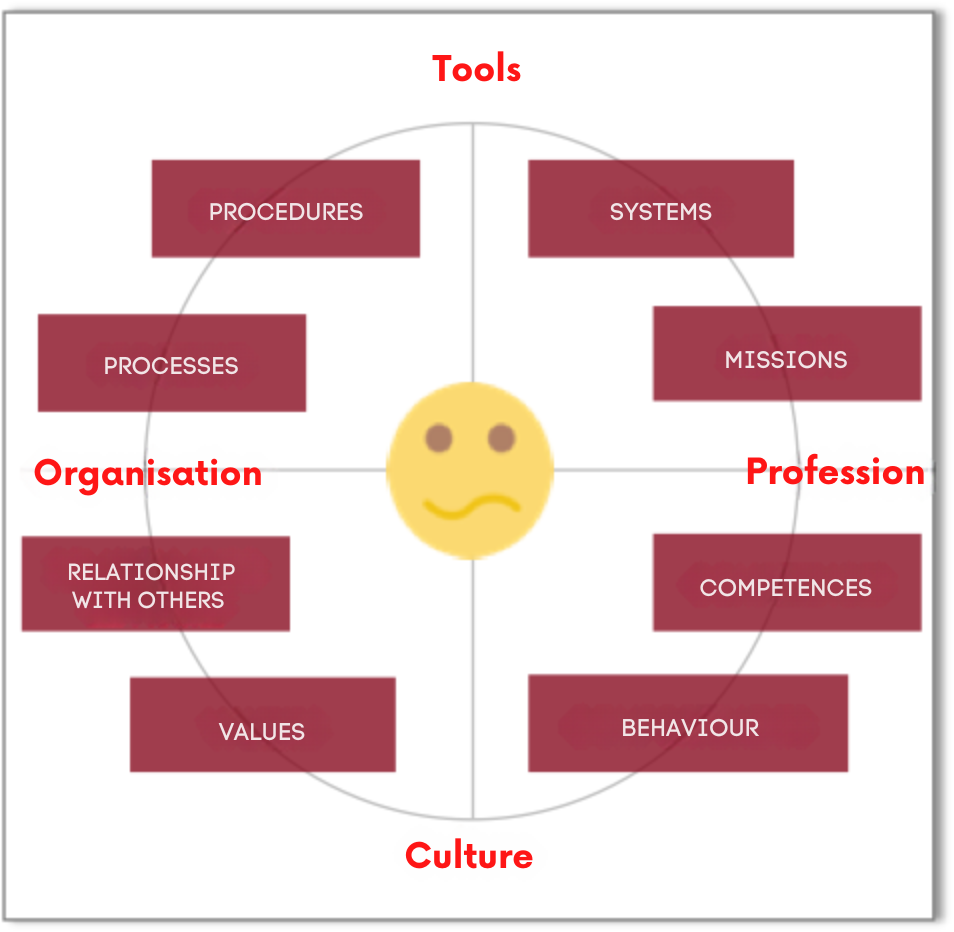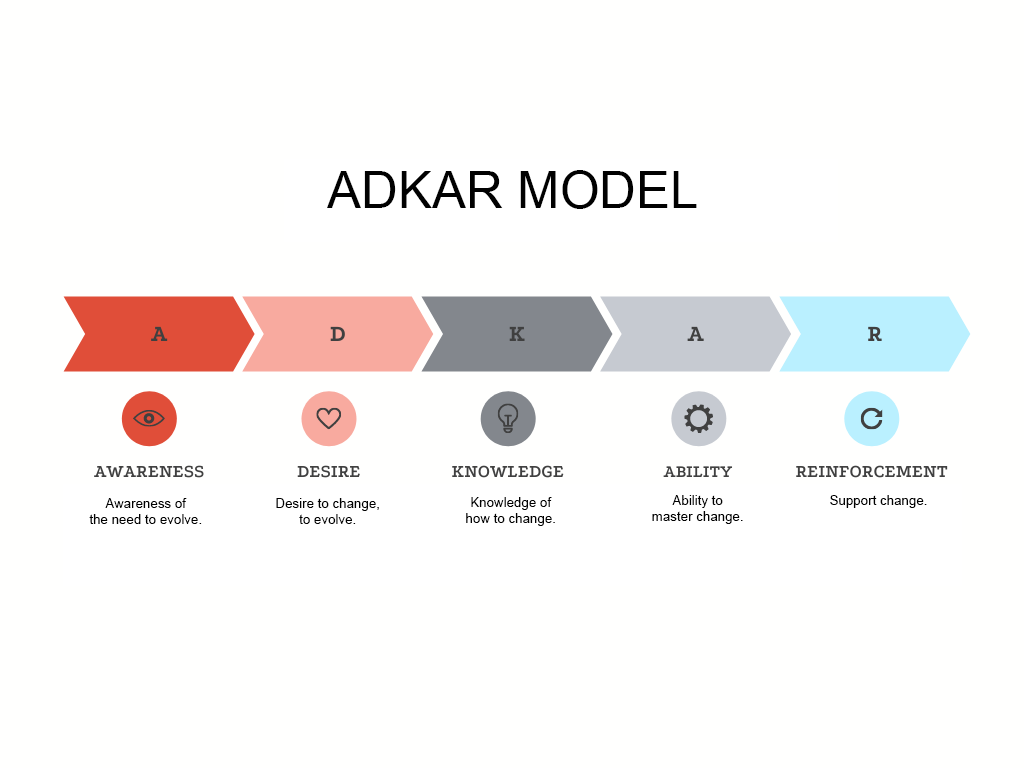Change management appears today as an essential element in the success process of a project and its management. This is even more true for so-called transformation projects that bring about more or less impactful changes for the company, the organisation, and the collaborators who are part of it.
To ensure that the transition from the current state to the future state occurs under the best conditions, it may be interesting to use some tools that facilitate the proper conduct of activities, presented below.
Tool 1: tool to measure the “height of the step”: the OMOC matrix for impact analysis

This tool allows identifying impacts of a project’s change on collaborators according to four essential organisational dimensions:
- Tool dimension: what will be the impacts on current tools? What tools will be necessary to realise the change?
- Professional dimension: how will the project change and evolve the missions and skills of collaborators and managers?
- Cultural dimension: will the project generate a new way of working, a different approach favouring new behaviours, new values?
- Organisational dimension: what impacts will the project have on the current processes or structure of the organisation?
A project often has a dominant aspect. For example, it could be a reorganisation project, a project to create new professions, a project with a new vision for the company, or a project to implement a new tool. This tool allows us to approach a transformation from all angles. Indeed, a project on tools has impacts on processes, on everyone’s missions, and on daily work habits.

Facilitating the proper conduct of activities

Tool 2: project health evaluation (PCT)
Project Health Evaluation (or PCT analysis) is a method developed by the company Prosci, a pioneer in the field of change management. It is used to facilitate the success of a project by evaluating four aspects deemed critical to a project, namely:
- Project management: it allows verifying the technical aspect of the project led by the company (planning, scope, cost…).
- Change management: it addresses the human side and the elements put in place to deal with it and facilitate the conduct of changes.
- Leadership and strategy: they allow verifying the alignment of the direction and the organisation with the chosen evolution strategy.
- Evaluation of the project’s chance of success: it allows analysing the objectives, expected results, context, and management method.
The evaluation of components is based on a set of criteria to be evaluated to obtain an average score for each component. The results obtained allow evaluating a level of risk:
- High, which requires immediate action in management
- Possible, which requires a more in-depth examination
This evaluation highlights the strengths of the project (actions that should be maintained and well exploited) and the company.
Tool 3: the ADKAR model
The ADKAR model is also one of the tools developed by the company Prosci. ADKAR guides individuals towards the desired situation and transformation (by adopting a well-defined conduct). Thus, according to Prosci, a collaborator must achieve 5 results to become proficient and accept the transformation.
The 5 results correspond to the words forming the acronym ADKAR, namely:
- Awareness: sensitisation to the need to evolve
- Desire: desire to change, to evolve
- Knowledge: knowledge of how to change
- Ability: ability to master the change
- Reinforcement: reinforcement, or how to maintain the conduct of change in good conditions within the company

What is interesting about this plan is that it considers that an individual can only move to the next step after achieving the previous result. In other words and as an example, an individual will only be able to master the change in their work after knowing how to change (new methods, new workplace to adopt), which can be achieved through training and regular, adapted communication.

Change management: an essential element

4 important points from this article
- Importance of change management
The success of a project, particularly transformation projects, depends on effective change management to ensure a smooth transition from the current state to the future state. - OMOC matrix
A tool that identifies the impacts of a project on collaborators according to four dimensions: tool, professional, cultural, and organisational. It allows approaching a transformation from all angles. - Project health evaluation
A method developed by Prosci to evaluate four critical aspects of a project: project management, change management, leadership and strategy, and evaluation of the chance of success. It identifies the risks and strengths of the project. - ADKAR model
A Prosci tool that guides individuals through a transformation by following five steps: Awareness (sensitisation), Desire (desire to change), Knowledge (knowledge of change), Ability (ability to master change), and Reinforcement (maintaining change).
Contact us
Write to usFollow us on LinkedIn
Follow us
